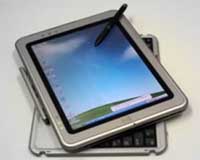 |
Taipei (AFP) Dec 16, 2009 Taiwan has developed tiny microchips that could lead to lighter and cheaper laptops or mobile phones, researchers and observers said Wednesday. State-backed National Nano Device Laboratories in northern Hsinchu city said it had succeeded in packing more transistors into smaller chip space than anyone else so far. "Electronic gadgets like cellphones and laptops could become smaller, lighter and cheaper with this technology," Yang Fu-liang, the lab's chief, told AFP. Currently, laptops seldom weigh less than about 1.5 kilograms (3.3 pounds) but the latest development could see notebook computers weighing as little as 500 grams. "It's indeed the most advanced chip technology ever," said Nobunaga Chai, an analyst at Digitimes, a Taipei-based industry publication. The field Yang and his team are working on is called 16-nanometre technology, referring to the space between transistors on a chip. The smaller the space, the more transistors can be fitted on to the chip. An average human finger nail is 25 million nanometres long. Researching new technologies at this microscopic level poses formidable challenges to scientists. "Sixteen nanometres used to be considered the final frontier," said Yang. Share This Article With Planet Earth
Related Links Computer Chip Architecture, Technology and Manufacture Nano Technology News From SpaceMart.com
 Physicists predict cooler computers
Physicists predict cooler computersToronto (UPI) Dec 15, 2009 Canadian physicists say they have discovered new behaviors of light occurring within photonic crystals. University of Toronto quantum optics researchers Professor Sajeev John and doctoral student Xun Ma said their findings could lead to faster optical information processing and compact computers that don't overheat. "We discovered that by sculpting a unique artificial vacuum ... read more |
|
| The content herein, unless otherwise known to be public domain, are Copyright 1995-2009 - SpaceDaily. AFP and UPI Wire Stories are copyright Agence France-Presse and United Press International. ESA Portal Reports are copyright European Space Agency. All NASA sourced material is public domain. Additional copyrights may apply in whole or part to other bona fide parties. Advertising does not imply endorsement,agreement or approval of any opinions, statements or information provided by SpaceDaily on any Web page published or hosted by SpaceDaily. Privacy Statement |